You searched for: 谷歌seo竞价详细教程【TG飞机:@bapingseo】南欧谷歌seo黑帽优化【TG电报:@bapingseo】做外贸网络推广主治火19星服务【Telegram:@bapingseo】ek平台代币百家乐平台最新网址?20220707qM2QNR.html
<< Previous | Displaying results 101-150 of 204 for "谷歌seo竞价详细教程【TG飞机:@bapingseo】南欧谷歌seo黑帽优化【TG电报:@bapingseo】做外贸网络推广主治火19星服务【Telegram:@bapingseo】ek平台代币百家乐平台最新网址?20220707qM2QNR.html" | Next >>
-
Vidkun Quisling
ArticleVidkun Quisling, Minister President of Norway from 1942 to 1945, was a Norwegian fascist and Nazi collaborator. His last name has come to mean “traitor” or “collaborator.”

-
Henny Schermann
ID CardHenny's parents met in Germany soon after her father emigrated from the Russian Empire. Henny was the first of the Jewish couple's three children. The family lived in Frankfurt am Main, an important center of commerce, banking, industry and the arts. 1933-39: After the Nazis came to power, they began to persecute Jews, Roma (Gypsies), men accused of homosexuality, people with disabilities, and political opponents. In 1938, as one way of identifying Jews, a Nazi ordinance decreed that "Sara" was to be…

-
Janka Glueck Gruenberger
ID CardJanka was one of seven children raised in a Yiddish-and Hungarian-speaking household by religious Jewish parents in the city of Kosice. In 1918, when she was 20 years old, Kosice changed from Hungarian to Czechoslovak rule. Three years later, Janka married Ludovit Gruenberger, and their three children were born Czech citizens. 1933-39: Janka was an accomplished milliner, and she helped her husband run a tailoring business from their apartment. Like many Jews in Kosice, Janka and Ludovit were upset when…
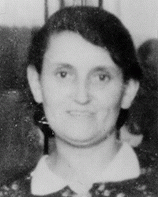
-
Bertha Adler
ID CardBertha was the second of three daughters born to Yiddish-speaking Jewish parents in a village in Czechoslovakia's easternmost province. Soon after Bertha was born, her parents moved the family to Liege, an industrial, largely Catholic city in Belgium that had many immigrants from eastern Europe. 1933-39: Bertha's parents sent her to a local elementary school, where most of her friends were Catholic. At school, Bertha spoke French. At home, she spoke Yiddish. Sometimes her parents spoke Hungarian to each…
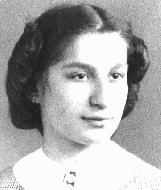
-
Wolf Wajsbrot
ID CardWhen Wolf was a young boy, his family moved to France to escape Poland's economic instability and growing antisemitism. Soon after they settled in Paris, his father found work in construction, and Wolf started elementary school. 1933-39: Paris was home to Wolf, but he loved to listen to his parents reminisce about autumns in Krasnik and journeys to Lublin. Hitler invaded Poland in 1939. The Wajsbrots learned of the death camps and mass deportations of Jews. Wolf's parents no longer spoke of the past. Wolf…
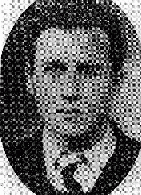
-
Eva Heyman
ID CardThe only child of a cosmopolitan Hungarian Jewish couple, Eva grew up in a city on the border between Romania and Hungary. Nearly one-fifth of the city's population was Jewish. Eva was a small child when her parents, Agi and Bela, divorced, and she went to live with her grandparents. 1933-39: After the divorce, Eva saw little of her mother, who remarried and moved to Budapest. She also rarely saw her father, who lived on the other side of the city. Eva lived with her grandmother and grandfather near the…
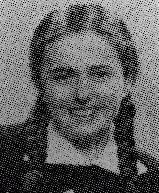
-
Deportations to and from the Warsaw Ghetto
ArticleAt its height, the Warsaw ghetto held over 400,000 people living in horrendous and worsening conditions. Learn about deportations both to and from the ghetto.

-
Dawid Sierakowiak
ArticleYoung people's diaries capture some of the most heartbreaking experiences of the Holocaust. Learn about the diary and experiences of David Sierakowiak.
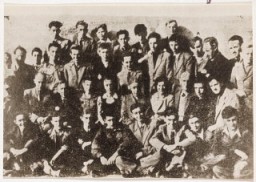
-
Law on the Head of State of the German Reich
ArticleThe Law on the Head of State of the German Reich was the last step in destroying democracy in interwar Germany and making Adolf Hitler a dictator. Learn more.
-
Krakow Ghetto: Key Dates
ArticleExplore a timeline of key events during the history of the Krakow ghetto in German-occupied Poland.
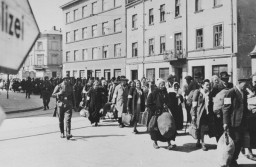
-
Theresienstadt: Establishment
ArticleLearn about the establishment of the Theresienstadt camp/ghetto, which served multiple purposes from 1941-45 and had an important propaganda function for the Germans.

-
Anne Frank Biography: Who was Anne Frank?
ArticleAnne Frank is among the most well-known of the six million Jews who died in the Holocaust. Discover who Anne Frank was and what happened to her.
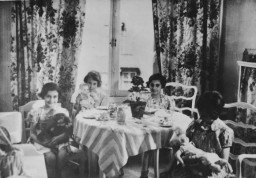
-
Raoul Wallenberg and the Rescue of Jews in Budapest
ArticleSwedish diplomat Raoul Wallenberg led an extensive rescue effort during the Nazi era. His work with the War Refugee Board saved thousands of Hungarian Jews.
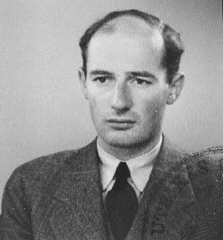
-

-
Hungary after the German Occupation
ArticleThe Nazis invaded Hungary in 1944 to prevent the government from negotiating an armistice with the Allies. Learn more about conditions in occupied Hungary.

-
Gardelegen
ArticleIn April 1945, US troops encountered a barn on the outskirts of Gardelegen where the SS and its accomplices had massacred over 1,000 concentration camp prisoners.

-
Locating the Victims
ArticleThe Germans and their collaborators used paper records and local knowledge to identify Jews to be rounded up or killed during the Holocaust.

-
Nicholas Winton and the Rescue of Children from Czechoslovakia, 1938–1939
ArticleNicholas Winton organized a rescue operation that brought hundreds of children, mostly Jewish, from Czechoslovakia to safety in Great Britain before the outbreak of WWII.

-
Althammer
ArticleThe Germans established the Althammer camp in September 1944. It was a subcamp of Auschwitz. Read more about the camp's history and conditions there.
-
Evidence from the Holocaust at the First Nuremberg Trial
ArticleProsecutors before the IMT based the case against 22 leading Nazi officials primarily on thousands of documents written by the Germans themselves. Learn more.

-
Helena Husserlova with her daughter, Zdenka
PhotoIn this portrait, Helena Husserlova, wearing a Jewish badge, poses with her daughter Zdenka who is holding a teddy bear. The photograph was taken shortly before they were deported to Theresienstadt. Zdenka was born in Prague on February 6, 1939. On October 10, 1941, when Zdenka was just two and a half years old, her father was deported to the Lodz ghetto. He died there almost a year later, on September 23, 1942. Following his deportation, Helena and Zdenka returned to Helena's hometown to live with…
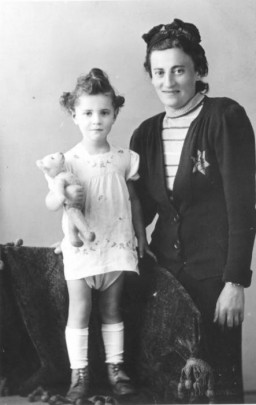
-
Letter from Elkhanan Elkes
Timeline EventOctober 19-November 11, 1943. On this date, Elkhanan Elkes wrote his will. It was smuggled out of the Kovno ghetto and delivered to his children.
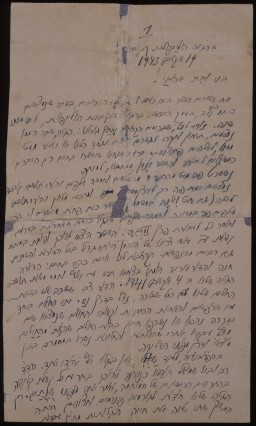
-
Ohrdruf
ArticleThe Ohrdruf camp was a subcamp of the Buchenwald concentration camp, and the first Nazi camp liberated by US troops.
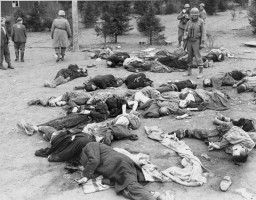
-
Gerda Blachmann Wilchfort describes the mood of passengers on the "St. Louis" after they were denied entry into Cuba
Oral HistoryGerda and her parents obtained visas to sail to Cuba on the "St. Louis" in May 1939. When the ship arrived in Havana harbor, most of the refugees were denied entry and the ship had to return to Europe. Gerda and her parents disembarked in Belgium. In May 1940, Germany attacked Belgium. Gerda and her mother escaped to Switzerland. After the war, they were told that Gerda's father had died during deportation.

-
The United States and the Holocaust, 1942–45
ArticleWhy did the United States go to war? What did Americans know about the “Final Solution”? How did Americans respond to news about the Holocaust? Learn more.

-
Kristallnacht
ArticleOn November 9–10, 1938, the Nazi regime coordinated a wave of antisemitic violence. This became known as Kristallnacht or the "Night of Broken Glass." Learn more

-
Amalie Petranker
ID CardAmalie was one of three daughters born to Jewish parents. The family lived in Stanislav [Stanislawow], Poland. Her father was an ardent supporter of resettlement in Palestine, and dreamed of moving his family there to help build the Jewish homeland. Amalie and her sisters attended private Hebrew primary and secondary schools to help prepare them for their eventual immigration to Palestine. 1933-39: In September 1939 Stanislav [Stanislawow] was occupied by the Soviet army. Amalie's father lost his job in…
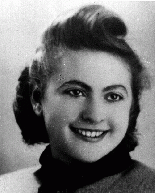
-
Judith Gabriel Dichter
ID CardJudith, nicknamed Julie, was one of five children born to religious Hungarian-Jewish parents in the Burgenland, the eastern province of Austria that was part of Hungary until 1921. She married Tobias Dichter, a traveling salesman from Vienna who had sold merchandise to her father. The Dichters moved to an apartment in Vienna's Jewish Leopoldstadt district, where they raised two children. 1933-39: The Germans have annexed Austria. One week after the annexation, Germans came to Julie's apartment to take her…
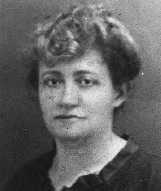
-
Malvin Katz Fried
ID CardMalvin and her eight brothers and sisters were born to religious Jewish parents in the small town of Buj in northeastern Hungary. The family later moved to the village of Zalkod, where Malvin's father ran a general store. The Katz family lived in a sprawling farmhouse with a large garden and fruit orchards. Malvin married Sandor Fried, the brother of her sister Sadie's husband, Hermon. 1933-39: Malvin's oldest sister, Sadie, who immigrated to the United States many years ago, has come home for a visit.…
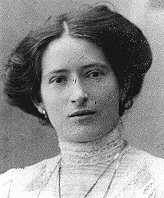
-
Kato Dicker Nagy
ID CardThe fourth of five children, Kato was born to a Jewish family who owned a successful furniture store and lumberyard in Ujpest, five miles from Budapest. As a young girl, Kato enjoyed singing and playing the violin in her family "orchestra" in their large home. She was also athletic, and loved to swim, bicycle and play tennis. Best of all, Kato enjoyed rowing on the Danube with her friends. 1933-39: Newly married, Kato moved to Zagyvapalfalva, a town northeast of Budapest with only five or six Jewish…
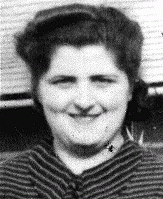
-
Judith Kalman
ID CardJudith was the only child born to a Jewish couple who lived in Hatvan, a small town 36 miles northeast of Budapest. Judith's father worked in his brother's business, marketing grains and other agricultural products purchased from local farms. When she was 3, Judith gave her first public recitation of poetry, an interest that she pursued throughout her childhood. 1933-39: Judith's family wasn't religious--they were Hungarians who happened to be Jewish, and their family was well-liked in Hatvan. But in the…

-
Gertruda Nowak
ID CardGertruda was one of five children born to a poor family in the rural community of Zegrowek in western Poland. The Nowaks lived near Gertruda's grandparents. Like their parents, Sylwester and Joanna Nowak, the Nowak children were baptized in the Roman Catholic faith. 1933-39: As a young girl, Gertruda helped with chores around the house, and after school she looked after her younger brothers and sisters. She was 9 years old when the Germans invaded Poland on September 1, 1939. Nazi troops reached Zegrowek…
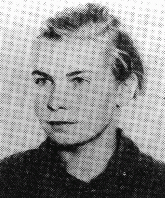
-
Julian Noga
ID CardAlthough Julian's Polish Catholic parents had immigrated to the United States before World War I, his mother had returned to Poland and Julian was born in a village not far from the large town of Tarnow in southern Poland. Julian was raised in Skrzynka by his mother on her four-acre farm while his father remained in the United States. 1933-39: At 16 Julian left home and worked as a dishwasher in an elegant Jewish club in downtown Tarnow. When the Germans invaded in September 1939, he returned to his…

-
Pola Nussbaum
ID CardPola was born to a Jewish family in a small town [in Poland] about three miles from the German border. Her family had lived there for generations. Pola's father exported geese and other goods to Germany; her mother owned a fabric store. They lived with Pola's grandmother in a large, single-level, gray stucco house. Raczki had a small Jewish community with a Hebrew school that Pola attended. 1933-39: In 1937 Pola began secondary school in the town of Suwalki. She excelled in math, and hoped to study…

-
Helene Melanie Lebel
ID CardThe elder of two daughters born to a Jewish father and a Catholic mother, Helene was raised as a Catholic in Vienna. Her father died in action during World War I when Helene was just 5 years old, and her mother remarried when Helene was 15. Known affectionately as Helly, Helene loved to swim and go to the opera. After finishing her secondary education she entered law school. 1933-39: At 19 Helene first showed signs of mental illness. Her condition worsened during 1934, and by 1935 she had to give up her…
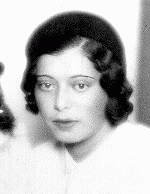
-
Mina Schaerf Litwak
ID CardMina was the daughter of Chaim and Scheindel Schaerf. They lived in the multi-ethnic town of Vinnitsa. Mina came from a religious Jewish family. At 19 she married Josef Litwak, a banker from the nearby town of Dolina, Poland. The couple settled in the industrial city of Lvov, where they raised five children. Four languages were spoken in their household--Polish, Russian, German and Yiddish. 1933-39: The Litwak's two youngest children, Fryda and Adela, had finished secondary school and were planning to…

-
Dora Rivkina
ID CardDora was the second of three girls born to a Jewish family in Minsk, the capital of Belorussia. Before World War II, more than a third of the city was Jewish. Dora and her family lived on Novomesnitskaya Street in central Minsk. Dora's father worked in a state-owned factory building furniture. 1933-39: As a young girl, Dora was athletic and excelled at swimming and dancing. When she was in the second grade, she was chosen to dance the lead part in a New Year's performance. She was also a member of the…
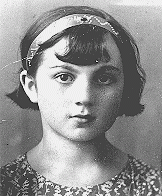
-
Jozef Wilk
ID CardJozef was the youngest of three children born to Roman Catholic parents in the town of Rzeszow in southern Poland. Jozef's father was a career officer in the Polish army. Jozef excelled in sports, and his favorite sport was gymnastics. He also studied the piano. 1933-39: Jozef was 14 when Germany attacked Poland on September 1, 1939. The invasion affected him deeply. Brought up in a patriotic family, he had been taught to love and defend Poland. The Germans were bombing Warsaw, the Polish capital, but…
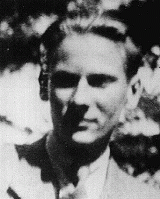
-
Chaje Isakovic Adler
ID CardThe youngest of 11 children, Chaje was raised by religious, Yiddish-speaking Jewish parents in a village in Czechoslovakia's easternmost province. At the age of 12, she was apprenticed to a men's tailor. In the 1920s she married Jermie Adler from Selo-Solotvina. Together, they moved to Liege, Belgium, where they raised three daughters and she continued to work as a tailor. 1933-39: Chaje's customers called her the "Polish tailor." Raising her children as Jews in the largely Catholic city of Liege did not…
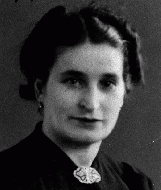
-
Barbara Nemeth Balint
ID CardBarbara was born to a middle-class Jewish family in southeast Hungary. Her father had a store that carried grocery and hardware items. Barbara had a sister named Margit and a brother named Desider. In 1928 Barbara married Istvan Geroe and moved to the town of Torokszentmiklos. Her son, Janos, was born there a year later. 1933-39: In 1933 Barbara divorced and returned with 3-year-old Janos to her parents' home in the town of Szentes. She helped run her parents' store, which was located on a busy inter-city…
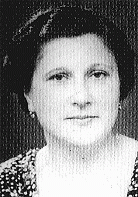
-
Margit Nemeth Fekete
ID CardMargit was born to a Jewish family in the city of Szentes. In 1919 she married and had a son, Gyorgy. When Gyorgy was still a baby, Margit divorced, but she remarried several years later. Her new husband, Vilmos Fekete, worked as a manager in a large electric company in Ujpest, a suburb of Budapest. Margit settled there and her son stayed in Szentes with his grandparents. 1933-39: Margit and her son saw each other as often as possible. Margit would travel by bus to Szentes to spend the Jewish holidays…
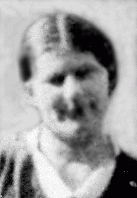
-
Terez Spitz Katz
ID CardA religious Jewish mother of nine, Terez settled with her husband, Jakab, and children in Zalkod, a small town in northeastern Hungary. Jakab ran a general store. Terez tended their sprawling farmhouse. She baked black bread in their wood-burning stove and canned the peaches and plums she gathered with her children and grandchildren from the family orchards. 1933-39: Terez's oldest daughter, Sadie, is visiting from America. Sadie comes with her parents every Friday when they take the horse-drawn wagon to…
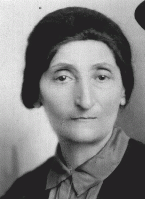
-
Chaie Sura Kisielnicki
ID CardChaie Sura was the youngest of three children born to Jewish parents living 35 miles east of Warsaw in the small, predominantly Jewish town of Kaluszyn. Her father owned a wholesale grocery store, a restaurant and a gas station, which were located together on the busy main road. The Kisielnicki family lived in rooms in the same building as their business. 1933-39: When Germany invaded Poland several days ago, Chaie Sura's father and brothers fled eastward towards the USSR with other Jewish men who were…
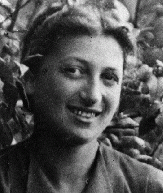
-
Majlech Kisielnicki
ID CardThe second of three children, Majlech was born to Jewish parents living 35 miles east of Warsaw in the small, predominantly Jewish town of Kaluszyn. Majlech's father owned a wholesale grocery store, a restaurant and a gas station, all of which were located on the heavily traveled main road. Majlech attended public elementary school and also received religious instruction. 1933-39: Majlech and his pals, Mindele, Sara and Adam loved to discuss politics. They'd heard the Polish propaganda claiming that…
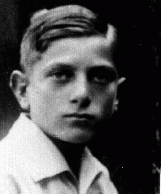
-
Thomas Elek
ID CardThomas was born to a Jewish family who moved to Paris when he was 6. His father's outspoken criticism of the fascist government and his affiliation with the Hungarian Communist Party led to the family's expulsion from Hungary in 1930. With the help of his father, a professor of modern languages, Thomas quickly learned French and excelled in school. He had a special interest in poetry and music. 1933-39: Thomas's father often argued against fascism, and he was greatly disturbed when Hitler became the…
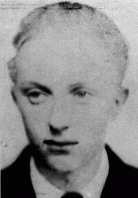
-
Alta Koppff Himmelfarb
ID CardThe daughter of a rabbi, Alta was one of six children raised in a Yiddish-speaking Jewish family in the town of Koprzewnica [in Poland]. Alta was one of the prettiest girls in town, and when she was 19 she married Shaul Himmelfarb, a childhood friend. Shaul opened a grocery store, and Alta ran the store on market days when Shaul was away buying merchandise. The couple had three children. 1933-39: On September 1, 1939, Germany invaded Poland. Soon after, German troops entered Koprzewnica. While fighting…
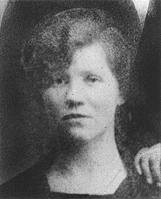
-
Sarah Rivka Felman
ID CardOne of seven children, Sarah was raised in a Yiddish-speaking, religious Jewish home in Sokolow Podlaski, a manufacturing town in central Poland with a large Jewish population of some 5,000. Sarah's parents ran a grain business. In 1930, Sarah began attending public elementary school in Sokolow Podlaski. 1933-39: After graduating from middle school in 1937 at the age of 14, Sarah helped out her now widowed mother in the family's grain business. Two years later, Germany attacked Poland. German aircraft…
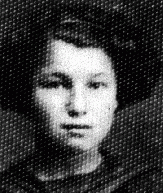
-
Jeno Brieger
ID CardJeno was born into a large, religious Jewish family in the village of Nagyhalasz in northeastern Hungary. The Briegers spoke Yiddish and Hungarian. After Jeno's mother died, his father remarried and the family moved to the town of Nyiregyhaza where his father owned and operated a hardware store. Nyiregyhaza had a Jewish population of 5,000. 1933-39: Jeno was the oldest son in a household of seven children. Nyiregyhaza was a rural town in which people still used horses and buggies. Jeno attended a…
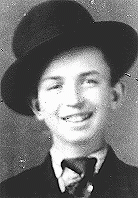
-
Gyula (Gyuszi) Brieger
ID CardGyula was also known as Gyuszi. He was born into a large religious Jewish family in the village of Nagyhalasz in northeastern Hungary. The Briegers spoke both Yiddish and Hungarian. After Gyula's mother died, his father remarried and the family moved to the town of Nyiregyhaza, where his father owned and operated a hardware store. Nyiregyhaza had a Jewish population of 5,000. 1933-39: Gyula was the second oldest son in a household of seven children. Nyiregyhaza was a rural town in which people still used…
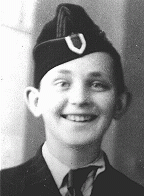
-
Machla Weiner
ID CardMachla was one of six children born to the Sandlers, a Jewish family in the Ukrainian village of Vachnovka. In 1912 Machla married Isaac Weiner, and by the late 1920s they had four sons and two daughters. Their oldest son died of scarlet fever in 1927. Hoping to find employment, Machla's husband moved the family in 1929 to the nearby city of Vinnitsa, which by then was part of the Soviet Union. 1933-39: In the early 1930s a severe famine swept the area. Machla's family survived, but times were hard. Isaac…

